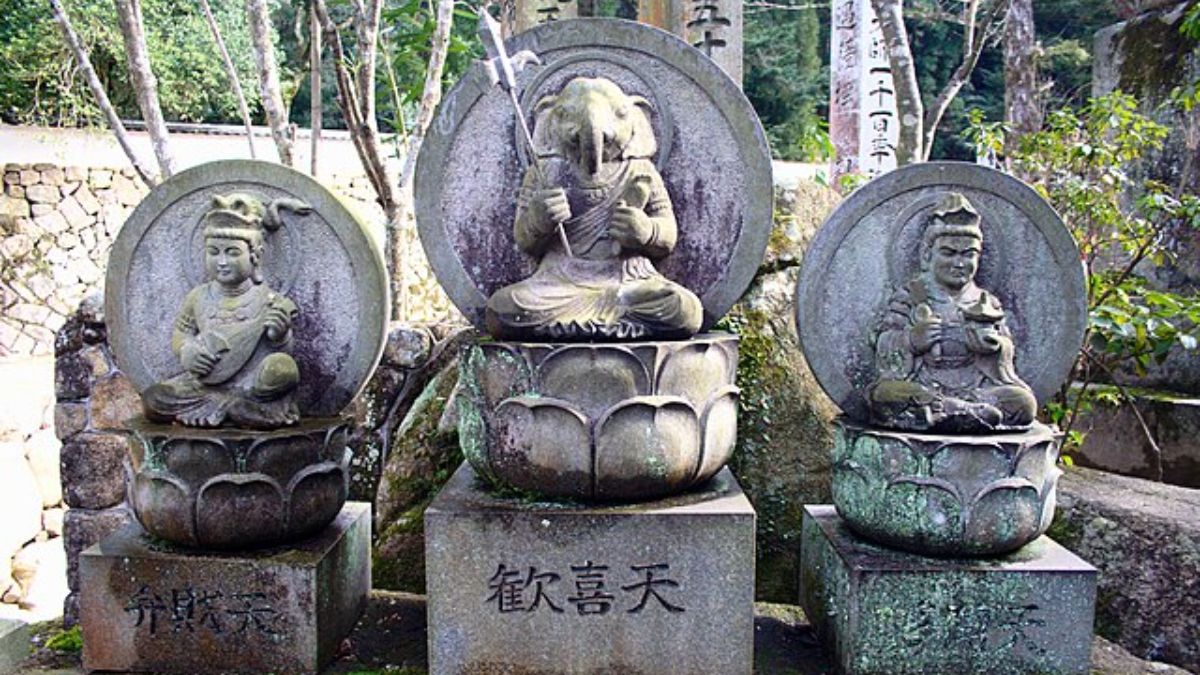Indians are bringing Bappa home. Devotees are geared up to celebrate Ganesh Chaturthi, a festival dedicated to one of the most popular deities in the country – Lord Ganesha. He is among the few gods whose presence transcends Indian borders.
Thailand also marks Ganesh Chaturthi around the same time as India. The elephant-headed god can also be found in different forms in other East and Southeast Asian countries. As per a Down To Earth (DTH) report, Ganesha travelled from Tibet to China and then Japan.
Let’s take a closer look.
Thailand
Ganesha is a revered figure among Thai Buddhists. Ganesha sculptures came up in Thailand around 550–600 CE, reported ThePrint.
Known as Phira Phikanet, the deity is considered a symbol of success and remover of all obstacles. He is worshipped ahead of opening a new business or on the occasion of a wedding.
The deity’s influence can also be witnessed in Thai art and architecture. Shrines and statues for the elephant-headed god are found across the country.
Cambodia
Ganesha is worshipped across Southeast Asia, though his arrival in the region is unclear.
According to the work on the deity by Professor of Indian and Southeast Asian art, Robert L Brown, the inscriptions and images of Ganesha in Southeast Asia can be traced back to
5th and 6th centuries.
In Cambodia, he became a major god and was worshipped in temples from the 7th Century. The deity is believed to possess the power to grant moksha and ultimate liberation to his devotees, as per ThePrint.
Impact Shorts
More ShortsALSO READ: From Thailand to Cambodia, how Ramayana spread across Asia
Tibet
In Tibet, Ganesha – worshipped as a Buddhist deity – has different forms such as Maharakta Ganapati and Vajra Vinayaka.
As per the Indian Express report, Indian Buddhist religious leaders Atisa Dipankara Srijna and Gayadhara introduced the deity to Tibetan Buddhism in the 11th century AD.
A 17th-century legend associated with Ganesha’s birth says he is the son of Ganga and Shiva. However, due to a curse by Uma, Shiva’s other wife, the newborn child loses his head. Ganga is then told to use the head of a dead body in place of her son’s decapitated head. This is the origin story of the elephant-headed god.
Tibetan mythology also links Ganesha to the birth of Lamaism, a form of Buddhism that originated in Tibet and Mongolia.
“The Tibetan Buddhist interpretation emphasised Ganesha’s roles as protector of Dharma, destroyer of evil and remover of obstacles. Hence, relevant characteristics of the elephant were highlighted. Muscular arms and legs, armour, tusks, and weapons were displayed prominently, and similar to other Tibetan deities, a wrathful expression and bold colours (red, black, brown) are not uncommon,” Lode Rosseels, a Belgian engineer and Japanologist, who researched on Ganesha in Tibet, China and Japan, told DTE in 2023.
China, Afghanistan
In China, Ganesha assumes a darker tantric form, as per ThePrint. He is known as Huanxi Tian, who is depicted as an obstacle.
A popular Ganesha sculpture, carved around the 6th or 7th century CE, is present in Gardez near Afghanistan’s Kabul. Known as Gardez Ganesha, he is worshipped as a god of wisdom and prosperity.
ALSO READ: 10 dessert recipes to try this Ganesh Chaturthi
Japan
Along with Buddhism, Ganesha reached from India through Tibet and China to Japan, as per DTE. Referred to as Kangiten, he is associated with Japanese Buddhism and revered by merchants, gamblers, actors and geishas.
The deity has evolved into a unique ‘twin’ form in Japan, with male and female figures embracing. This version is popular as ‘Embracing Kangiten’. “The Japanese Kangiten emphasises the gentle and strong nature of the elephant. The deity is shown as a couple of elephant-headed deities in an amorous embrace, often partially dressed and with silky white or light pink skin. In this version, prosperity is created through passion and goodness, rather than strength and violence. This is the most anthropomorphic representation of Ganesha,” Rosseels was quoted as saying by DTE.
There are other versions as well. One of the depictions of Japanese Ganesha shows him with four arms holding a radish and a sweet, reported Indian Express.
Indonesia
On the island of Java in Indonesia, Ganesha was worshipped as a tantric deity who removes obstacles in magical rituals by King Kritanagara. This came as a blend of tantric Buddhism and Shaivism developed here by the 14th–15th centuries CE, as per ThePrint report.
Ganesha is also depicted wearing skulls and sitting upon thrones of skulls.
A more Hindu version of Ganesha is also found in Java. A 700-year-old idol of Ganesha sits at the mouth of a volcano in Mount Bromo in Tengger Semeru National Park, East Java.
Mount Bromo, named after Lord Brahma, is one of the over 120 active volcanoes in Indonesia. Locals believe the idol protects them from the active volcano.
With inputs from agencies


)

)
)
)
)
)
)
)
)



